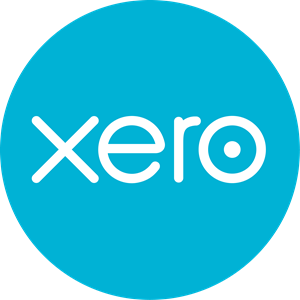Our Construction SaaS Grew 3x In One Year
Hi everyone! My name is Ekke Uustalu and I am one of the co-founders of Planyard. We started the company about 3 years ago to provide transparency and forecasting to construction companies whose multi-million dollar projects were kind of a black box for them - you can’t predict the outcome very easily before the end of your project.
Planyard is an online platform that takes the majority of the manual work away from composing financial reports and seeing where your projects are headed. We are trying to make the project as user-friendly as possible to make the end-users lives easier. We don’t enjoy the old way of top-to-bottom sales where the management decides the tools. Without Planyard, many of our customers need about 3-5 workdays per month to go through all of their incomes, invoices, and offers to compose a holistic picture of the project.
With Planyard, all they have to do is to input their initial budget on the system and input their running expenses as they come in. Planyard then uses this information to generate an overview of the progress. Having this data in a structured format allows us to alert the users in advance that they are going to exceed their estimations and might need to take action to not threaten the existence of their companies. Depending on the financing format, they can then take a loan or ask for additional funding from their client.
We have decided to bootstrap the business so far and have been able 3x our revenues in the past year with minimal marketing expenses. We have also added more than 5 new additional countries to our customer base.
Below is a picture of the founding team in the mountains of Switzerland where we have our yearly team event. We decided to take these heavy shopping e-bikes on a “little” trip where climbed about 2200 meters of height in a few hours;

What's your backstory and how did you get into entrepreneurship?
I was born and grew up in the country of Estonia, in northeast Europe, which just gained its independence from the soviet union. Due to good timing and the lack of financial means, the country decided to focus heavily on digitalization for all public sector services. For example, the average monthly salary in Estonia in 1992 was about 35$.
In addition to that, many large software solutions are originally from there - Skype, Wise (TransferWise), etc. Because of this, many of the companies popping up in Estonia are heavily software-focused.
As a young kid in this post-soviet country, which had almost no entrepreneurial history, I didn’t have much contact with it through my family and relatives. In high school, I started to think about entrepreneurship more and often did profitability or cash flow calculations when I went to a restaurant or similar place. I even put together some basic business plans with a classmate and did initial steps for sourcing the products, but decided to fold on the idea.
During my university studies, I had mandatory entrepreneurship classes which I loved. They gave insight into how to assess the market status and do classic analysis. The theoretical part and the business plan parts were not my favorite takeaways, but the idea still stuck with me.
At the beginning of my Master’s, we started an Amazon selling business with some coursemates, by looking for opportunities in the market, designing our products, finding the suppliers from China, and then finding a provider that would combine all of the small pieces in the package. This experiment ended quite happily since we were able to get back almost half of the $10K that we put into it. This whole experience is a topic for a full article on its own, but the learnings were very valuable nonetheless.
Coming from the side of an innovative solution can be interesting and rewarding, but if nobody wants to buy your product, then the best case option for you is pivoting. The worst-case scenario is to start from scratch again.
All of these experiments during my university studies were funded by part-time jobs in various startups and project-based software gigs that I did to stay afloat. This gave me enough flexibility to spend time on these low-cost/high-value failures.
Take us through your entrepreneurial journey. How did you go from day 1 to today?
We started Planyard together with Andres when I and Jan were still finishing our technical Master’s degrees. Jan and I had tried out various entrepreneurship paths already during our studies and the idea of it was compelling to both of us. However, we never kept working on any project long enough to see it succeed. I would say the main issue was that we were always brainstorming a solution without it being triggered by an actual problem someone was having.
It was different with Planyard, the B2B SaaS we are working on now. Andres was in the SaaS business already for some years before, having founded a startup that is still active right now and also working for other ones as well. Being in the business, he often got feedback from customers and also potential customers that there is a void in the construction financial forecasting software space. He put together some mockups after some initial interviews with people in the field.
With these simple PowerPoint mockups, he was able to convince some construction companies who were willing to commit to multi-year contracts without any development being done. In the end, we did not sign any binding contracts with them, but they are still our clients to this point.
That is still mainly how we run our business to this date. We have discovery calls with multiple clients and prospects who find a feature relevant or required. From these calls, we usually have enough information to put together a package that covers the majority of the needs of most customers. We make simple mockups that we can then present to all of the parties again and see if we need to iterate again. This low-cost mockup approach is probably the most valuable tool we have in our bootstrapped arsenal.
By going through these most important pain points of our customers, we have been able to take away problems from our customers and fix the problems in a way that also makes sense for them. This customer-first approach has made it possible for our business to grow through word-of-mouth marketing and without having an active sales team that reaches out. At the moment, most of our customers come to us through SEO and sign up for a demo or a trial, where we qualify them to see if they are a good match and then go from there.
This process doesn’t mean that we didn’t misunderstand or make assumptions on the way that didn’t end up being correct. We have had to reiterate existing features and spend a lot of time rethinking fundamental things we have in our product. We don’t look at this as a failure, but rather as learnings that will help us improve our customers’ processes and simplify their business.
How are you doing today and what does the future look like?
At the time of writing this article, Planyard is still bootstrapped with enough revenues to pay the three co-founders a reasonable salary, pay for the cloud expenses, and all of the tools we use to run our business.
We have not actively focused on growing our business up to this time if I am honest. Our main focus has been to perfect the product to a point where we feel confident that we can scale it and that our leads also convert, given we cover their needs. We have however done some minor experiments on PPC platforms - Google Ads, Capterra, etc. - with very promising results.
We have spent relatively small amounts of money on these platforms, but have been able to onboard several customers that pay 5x the amount in a year that we paid to acquire them. This means that with a 5-year lifetime of the customers, we have a potential ROI of 25x on these channels as a whole. In terms of customers' lifetime value, we are expecting to have at least $20K on average at the moment, but this number probably will be bigger. This number is a bit skewed since many customers are starting with one or two projects with a low fee. We have seen that we enable our customers to onboard more ongoing projects, thus increasing their monthly spending on Planyard.
In addition to many others, we are now present in the UK, US, AUS, and NZ markets and hope to scale these further. We have decided to go for this since the differences in financial and construction laws between smaller markets need more effort to solve as opposed to larger markets, where we already have proven use cases.
Since we are now pretty confident in the scalability of our platform, we have decided to go for seed funding that we hope to close in the first quarter of 2022. The money will be used to mainly scale our marketing and sales efforts. In addition to that, one more short-term goal is to test additional non-paid channels through integrations with various accounting tools. We already have the integrations in place and working, but we would like to promote them a bit more.
As a long-term goal, we want to become the go-to tool for construction companies when they need to manage their budgets. We aim to provide a guided and transparent way of taking your estimates and keeping the costs under control throughout the lifetime of the project. We want to achieve this by making the onboarding and usage as simple as possible. When the users are feeling comfortable with the tools that they are using, then they can unlock additional features for a slight increase in costs.
Through starting the business, have you learned anything particularly helpful or advantageous?
One of the biggest learnings must be patience. The bootstrapped way we have decided to go with means that you will not be able to get the results of your experiments and tests at the scale you would like to quickly enough. You have to plan your tests and prioritize at every step to make sure you are testing a solution to the biggest customer problems or that your solution is something that benefits the customers.
In the beginning, we sometimes made some decisions based on how we thought something should be done. This meant that oftentimes after implementing something and handing it over to the customer, we had to partially redo it since we had missed the point.
In terms of marketing, we think that our biggest future growth will come from SEO and integrations with platforms that the customers likely use already. These are channels that work 24/7 and do not need so much active involvement as outbound sales do, for example.
An additional factor that is also in our favor is the trend of digitalization in the construction sector. The industry is lagging and has awakened to also make a change for the better. Many other industries have tools that improve employee productivity and it is also time for that for the construction industry.
What platform/tools do you use for your business?
We try to use pre-existing solutions as much as possible for everything that we can and where it makes sense. They often help us stay more connected with our customers and provide a better service to them.
For example, for customer support, we use Intercom, and its features outbound messages, live chat, and support center functionality. This makes our life much easier and allows us to provide a top-notch experience to the customers.
For sales and marketing emails, we use HubSpot. We have all of our contacts there and follow the sales pipeline and tasks related to contacts there. This gives us an overview of our sales state and in the future will provide more information about the income forecasts.
For analytics, we use Amplitude at the moment to see which actions our users are taking and which features are used by whom and how often.
To feed user data into the various contact systems and analytics tools, we use Segment. This allows us to have a single analytics funnel that just forwards it everywhere else automatically.
Kinsta is our go-to choice for web hosting since it has very good feedback and we find that performance is critical for a better user experience and SEO positioning.
And since we are indeed a cloud-based software company, we also need a cloud provider. For this, we have decided to go with Google Cloud Platform, since it provides subjectively the best developer experience and with a lot of proprietary solutions which we can leverage to implement our features faster.
For various one-off tasks, we often use Upwork and similar platforms to get specific work done.
Advice for other entrepreneurs who want to get started or are just starting out?
This might be a bit biased, but I would recommend focusing on actual problems that people have and that people are desperate to solve. It is easier to get feedback from the people who have the problems and also to sell the solution to them later on.
Coming from the side of an innovative solution can be interesting and rewarding, but if nobody wants to buy your product, then the best case option for you is pivoting. The worst-case scenario is to start from scratch again.
I also think that sometimes startups scale too early by raising humongous amounts of capital when the whole company is like a house of cards. What I mean by that is that the company might be missing some stable foundation to build upon. There can be a lot of technical debt or unclear steps to take from the sales and marketing side. When you add more and more people and expectations, it is possible that at some point you won’t be able to deliver and the whole house collapses.
Just like the first comment, this one is biased based on my personal experience and the path we have decided to take. The readiness of scaling for Planyard will be proven in the next few months/years and it will show if, at least in our case, it makes sense.
Are you looking to hire for certain positions right now?
We are looking for a PPC marketer and possibly also the Head of Marketing if we see that there is a good fit. The person would be responsible for testing and managing our PPC campaigns and different channels. They would also be partially responsible for writing/editing/feedback for our landing pages and some of our blog posts.
In addition to marketing, we are looking for a writer/editor since we will be also working on content marketing. This means we will need someone with a compelling writing style to help us deliver the messages as clearly as possible. If they also have some experience with designing and layouts for content, this is also a big plus.
In terms of payment and the number of hours, it depends on the candidate. I am convinced we will find work to do for all skill levels and flexible schedules.
To get more information or to apply, please reach out to me at ekke@planyard.com.
Where can we go to learn more?

Download the report and join our email newsletter packed with business ideas and money-making opportunities, backed by real-life case studies.

Download the report and join our email newsletter packed with business ideas and money-making opportunities, backed by real-life case studies.

Download the report and join our email newsletter packed with business ideas and money-making opportunities, backed by real-life case studies.

Download the report and join our email newsletter packed with business ideas and money-making opportunities, backed by real-life case studies.

Download the report and join our email newsletter packed with business ideas and money-making opportunities, backed by real-life case studies.

Download the report and join our email newsletter packed with business ideas and money-making opportunities, backed by real-life case studies.

Download the report and join our email newsletter packed with business ideas and money-making opportunities, backed by real-life case studies.

Download the report and join our email newsletter packed with business ideas and money-making opportunities, backed by real-life case studies.

























